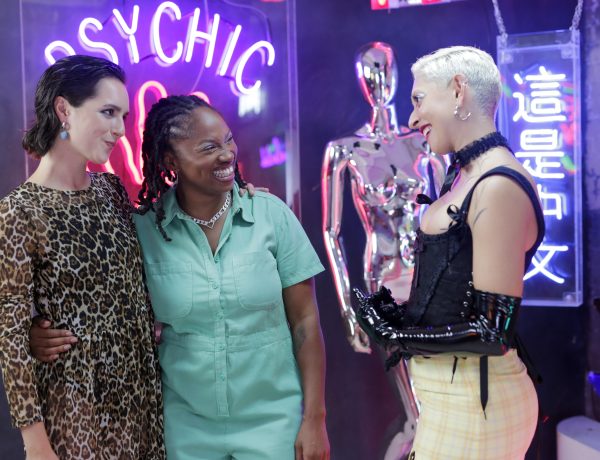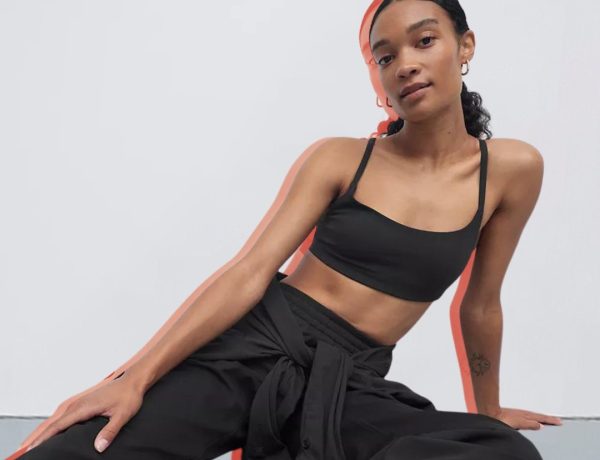
Writer, stylist, and entrepreneur Amira Rasool. Photo credits: https://www.theBlackownedbusinesses.com/businesses/the-folklore
Amira Rasool is a freelance writer, stylist, and entrepreneur, who currently serves as the Founder and CEO of The Folklore, a multi-brand e-commerce platform that brings African luxury brands to the global marketplace. She has written for various distinguished publications, from Women’s Wear Daily and Time to Vogue and Marie Claire. An avid historical scholar and social justice activist, much of her writing is centered around Black culture in fashion, art, and contemporary culture. Upon graduating from the University of Capetown, where she received a Master of Philosophy in African American studies, she founded The Folklore, fusing her passions for fashion and African American studies. The Folklore is an extension of her writing, as the brand functions as a storytelling platform that creates space for the voices of African designers. In less than two years, The Folklore has been featured in numerous prestigious magazines, such as Vogue and The Cut, and fashion blogs, such as Who What Wear.
I was so excited to speak with Rasool about the inspiration behind her brand, the origins of The Folklore, and the highs and lows of her prolific career path. You can follow Rasool’s adventures around the world on her Youtube channel, #AmiraStayTripping, for a glance into her life, and learn more about her mission behind The Folklore through her podcast channel!
1. At what point did you realize your passion lay in the intersection of African American studies and fashion writing? How did this niche interest come to fruition?
It happened organically— I had spent so much of my time in undergrad and also throughout high school preparing to have a career in fashion, specifically magazines—that included interning every semester at a different glossy magazine and working as a stylist throughout college. I learned New York City because of how much I was running errands as an intern. I put in so much work, it was something I was so passionate about, I had a really good sense of style, and I was really good at thinking outside of the box. I knew I wanted to be an entrepreneur. For example, I had an online e-commerce platform in college where I thrifted things for $5 that were worth far more, took pics in my dorm basement, and sold them for $45. When I graduated, I realized very quickly that the primary passion I had was Black history. I did not see myself making a difference through fashion, which seemed very vain, but I had put so much time and work into the fashion space. So I wanted to look at what I could do to use my knowledge and work in fashion to uplift my people. Today I love what I do because of the impact it has on my people.

Founder and CEO of The Folklore Amira Rasool. Photo credits: https://twitter.com/amirarasool/status/1132858831413874689https://twitter.com/amirarasool/status/1132858831413874689
2. How did your time in Cape Town influence your work?
My time in Cape Town allowed me to not just learn about different experiences on the continent or in South Africa specifically, but to actually be able to engage with communities there. The same thing happened when I was traveling in Nigeria during that time. It gave me a sense of belonging because we were displaced and didn’t have that connection with the continent, so having the ability to return and be accepted by South Africa was a really uplifting experience. I realized just from conversations I had there that what I was doing was important. It solidified that what I was doing would help create a bridge between fashion and the African diaspora. I hadn’t known that much about colonial studies and thought, so having debates with people in class was a very rewarding situation.
3. What inspired you to create The Folklore?
I came up with the idea when I was working at V Magazine. My original idea was the opposite: to import European and American luxury brands to Africa and sell in Cape Town. I remember I was on a date with a guy from Cape Town who told me that was pretty harmful and that that wasn’t necessarily helpful to the country, and he actually suggested doing the opposite. I remember trying to justify it by saying people on the continent deserved luxury. I brushed his idea off, but then a few months later the idea stuck with me. I kept thinking about why he thought it would be harmful to Cape Town. That was one of the things that prompted me to look at this space that isn’t being filled.
4. Please tell us a little bit more about the process of creating The Folklore.

I A M I S I G O S/S ’20 Collection on The Folklore. Photo credits: https://www.instagram.com/p/B4es8xpKydy/
At the beginning, I created a long, long business plan at the beginning that started with 150 questions that I needed to answer. It was a year and a half of planning. I intended to launch this a month after I left my job, so I spent that year and a half working towards my goals, setting more goals, and planning everything to a tee, though so much came up every day that I still needed to address, which is just a part of being in a business. The process includes identifying potential brands, communicating with designers, learning about how their business is set up, and what they need to reach an international audience.
5. What were the hardest and most rewarding parts of setting up The Folklore?
The hardest part is the lack of proper funding that my white counterparts receive, even at the family and friends level, and even more so, on an institutional level. It’s also hard trying to change consumers’ mindset about what they associated with luxury and where they choose to spend their money. The most rewarding part has been seeing the opportunity the Folklore has provided for so many brands… not just being their retail partner but also setting them up with celebrities who wear their brand and creating a ripple effect as their first retail partner outside the country.
6. How do you find your partner brands?
When I was in Capetown, I would travel to local designers and email them or pop up in their shop and tell them what I was doing. It wasn’t incredibly hard to convince people since most of them didn’t have the opportunity to sell outside the country.
7. How would you describe your personal aesthetic and style inspiration?

Rasool in Loza Maleombho top and Pichulik Earrings from The Folklore. Photo credits: https://www.instagram.com/p/B-SslUOgjyO/
It’s minimalist, but also contemporary- it embraces the quirkiness that comes from different styles all over the world. My personal style is Afro-Asian fusion—I spend a lot of time traveling Asia and Africa, and I think my travels have also inspired my aesthetic a lot. I like to combine silhouettes from Asia and Africa. A lot of designers in Africa have similar aesthetics as those in Tai Pei or China. I have a lot of cool Black pants that I picked up when traveling around Asia and I pair them with something from South Africa, and it looks like they were purchased in the same place. The urban aesthetic that those places have—the youthfulness, the newness— is deeply inspiring.

Sustainable accessories by The Folklore’s partner brand Shekudo. Photo credits: https://www.thefolklore.com/blogs/editorial/shekudo-shoes-creative-director-akudo-iheakanwa-interview
8. What role do environmentalism and sustainability play in your work?
Environmentalism and sustainability did not play too much of a role at the beginning, but they became a natural part of The Folklore. African designers have sustainable practices by necessity, such as not having access to big factories, so as their retail partner, my role was to feed off of their values.
9. What do you see as the role of The Folklore in BLM?
The Folklore’s support of Black people is separate from BLM. BLM was a movement to show that Black people are human and that we have a lot of things working against us in the system. We can’t treat this as a fad. We need to look at how to continue to support Black people absent of Black Lives Matter. We ask ourselves, how do we elevate the Black people beyond a hashtag? The Folklore stands with the principles and missions of Black Lives Matter at its core and increases Black visibility on a deeper level by creating a space for Black designers.
Read more fashion articles at Clichemag.com
Photo credits: Twitter, The Black Owned Businesses, The Folklore, and Instagram.




